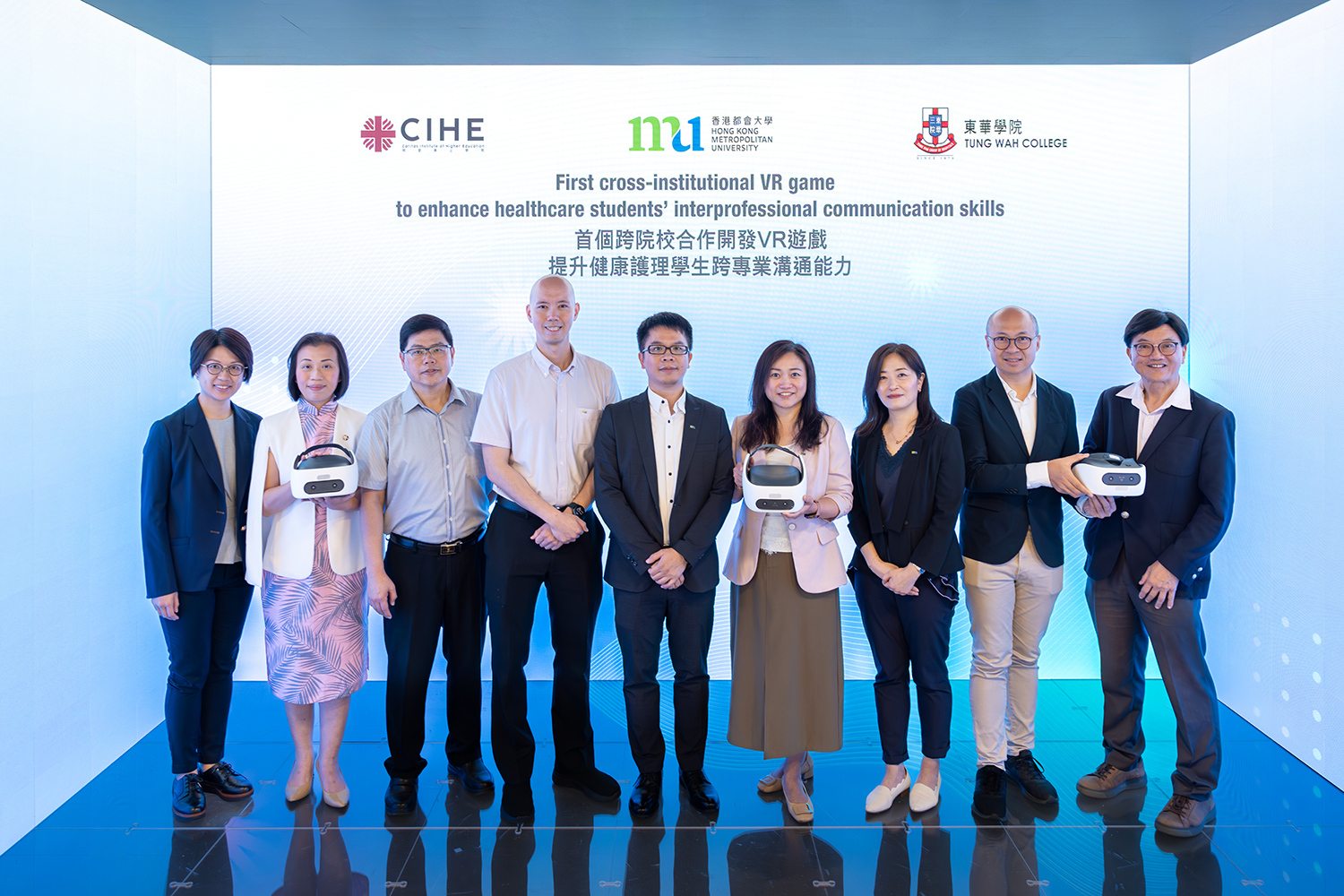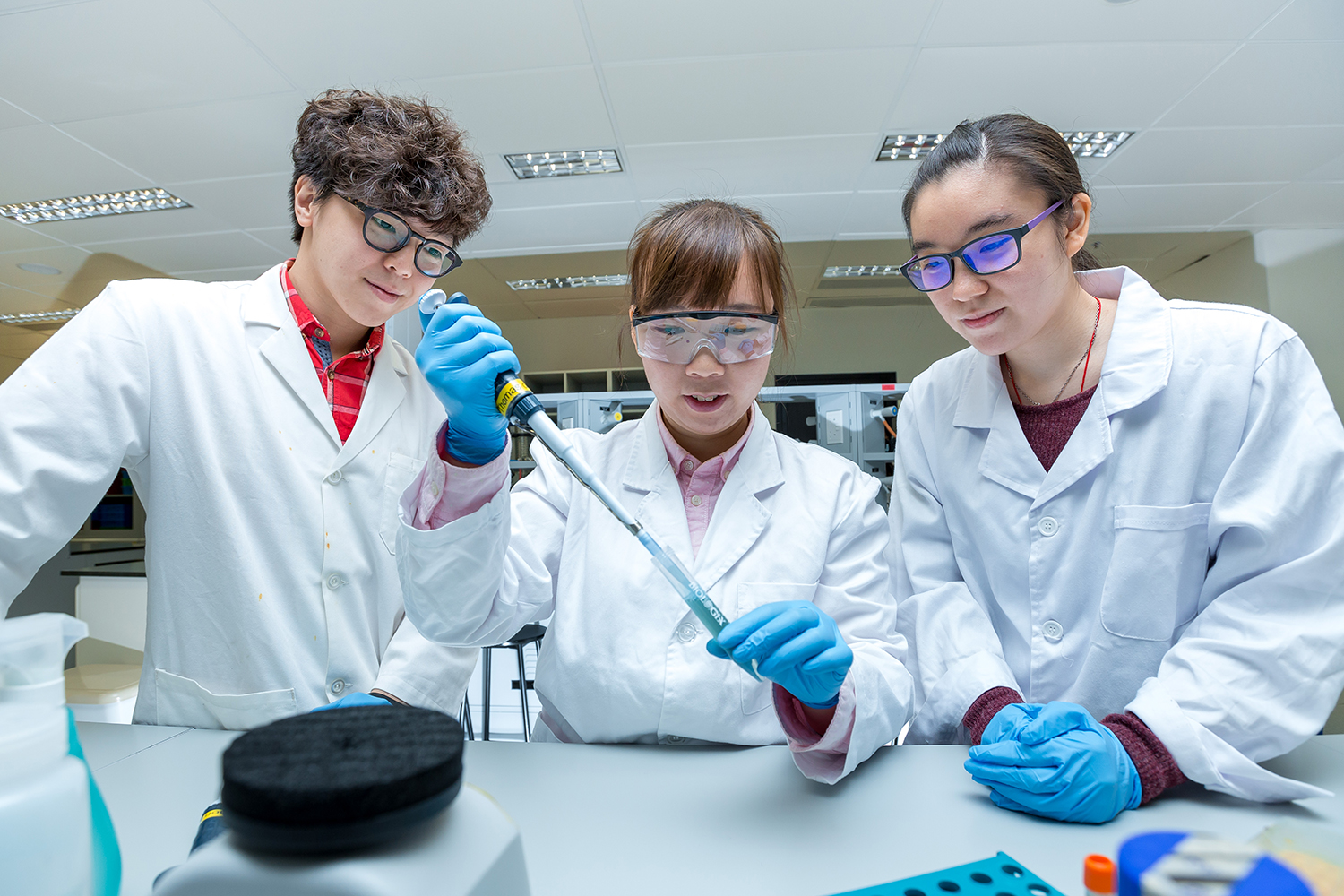28 Sep 2023
HKMU sets up MARS to further microalgae research in the Greater Bay Area and Southeast Asia


The School of Science and Technology (S&T) was commissioned by HKET TOPick to test six common face masks and six disinfectant products. The mask test aimed to establish whether bacterial filtration efficiency (BFE) could be affected by heat or humidity. Based on the ASTM F2101 testing standard, Associate Professor in Testing and Certification Dr Eric Sze tested two surgical masks of different brands, a bamboo charcoal fibre mask, an N95 respirator, a cotton mask and a photocatalyst mask. It was found that after eight hours of simulated wearing at 37°C and 90% humidity, the surgical masks, the bamboo charcoal fibre mask and the N95 mask still maintained a BFE of over 99%, while the BFE rate of the cotton and photocatalyst masks dropped by 10%.
The test on disinfectants involved a hydrogen peroxide solution, two disinfectant sprays and three alcohol-based hand rubs, and followed test methods for antibacterial-finished products. As it turned out, all specimens exhibited a bacteria-killing rate of over 99%; however, one alcohol-based rub recorded approximately 110 cfu in Staphylococcus aureus residue. According to Dr Sze, that particular hand rub could have been compromised by a reduction in alcohol concentration over time or due to poor storage. Noting that four of the specimens contain antibacterial agents, some of which could cause poisoning through long-term oral ingestion, he also warned against direct contact with food after applying these sanitizers to the hands or using them to disinfect tableware.


The School of Science and Technology (S&T) was commissioned by HKET TOPick to test six common face masks and six disinfectant products. The mask test aimed to establish whether bacterial filtration efficiency (BFE) could be affected by heat or humidity. Based on the ASTM F2101 testing standard, Associate Professor in Testing and Certification Dr Eric Sze tested two surgical masks of different brands, a bamboo charcoal fibre mask, an N95 respirator, a cotton mask and a photocatalyst mask. It was found that after eight hours of simulated wearing at 37°C and 90% humidity, the surgical masks, the bamboo charcoal fibre mask and the N95 mask still maintained a BFE of over 99%, while the BFE rate of the cotton and photocatalyst masks dropped by 10%.
The test on disinfectants involved a hydrogen peroxide solution, two disinfectant sprays and three alcohol-based hand rubs, and followed test methods for antibacterial-finished products. As it turned out, all specimens exhibited a bacteria-killing rate of over 99%; however, one alcohol-based rub recorded approximately 110 cfu in Staphylococcus aureus residue. According to Dr Sze, that particular hand rub could have been compromised by a reduction in alcohol concentration over time or due to poor storage. Noting that four of the specimens contain antibacterial agents, some of which could cause poisoning through long-term oral ingestion, he also warned against direct contact with food after applying these sanitizers to the hands or using them to disinfect tableware.



21 Sep 2023

13 Sep 2023
SIGN UP FOR OUR LATEST NEWS
© Hong Kong Metropolitan University. All Rights Reserved.
This website uses cookies so that we can provide you with the best user experience possible. Cookie information is stored in your browser and performs functions such as recognising you when you return to our website and helping our team to understand which sections of the website you find most interesting and useful.
Strictly Necessary Cookie should be enabled at all times so that we can save your preferences for cookie settings.
If you disable this cookie, we will not be able to save your preferences. This means that every time you visit this website you will need to enable or disable cookies again.